STAR-RISs-- a Correlated T&R Phase-Shift Model and Practical Phase-Shift Configuration Strategies
Date: 2024.03.12 16:26
Author: Joffrey LC
STAR-RISs: A Correlated T&R Phase-Shift Model and Practical Phase-Shift Configuration Strategies. Jiaqi Xu et.al. IEEE Journal of Selected Topics in Signal Processing, August 2022 (pdf) (Citations 37)
Quick Overview
- To realize a full-space smart radio environment, each STAR-RIS element has to dynamically impose two distinct tunable phase-shift values, one for the transmitted signal and one for the reflected signal.
- The phase shift can/cant be adjusted independently.
Phase shift model
Correlated adjustment
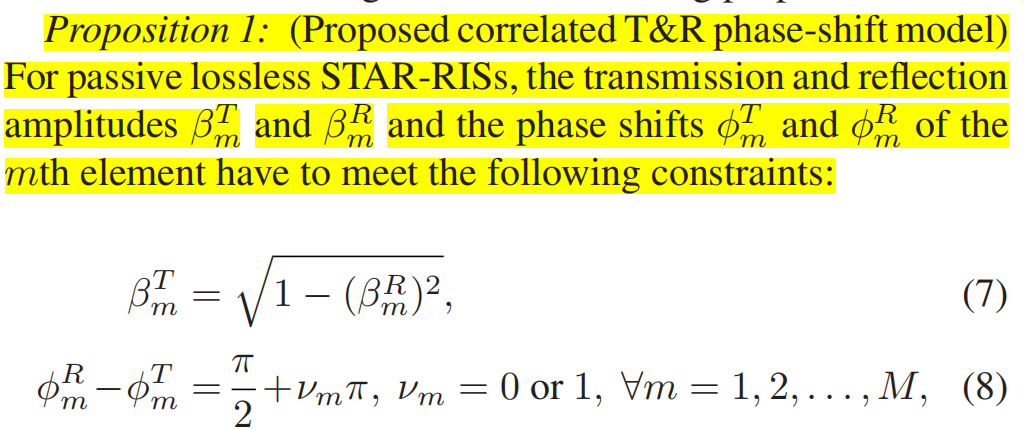
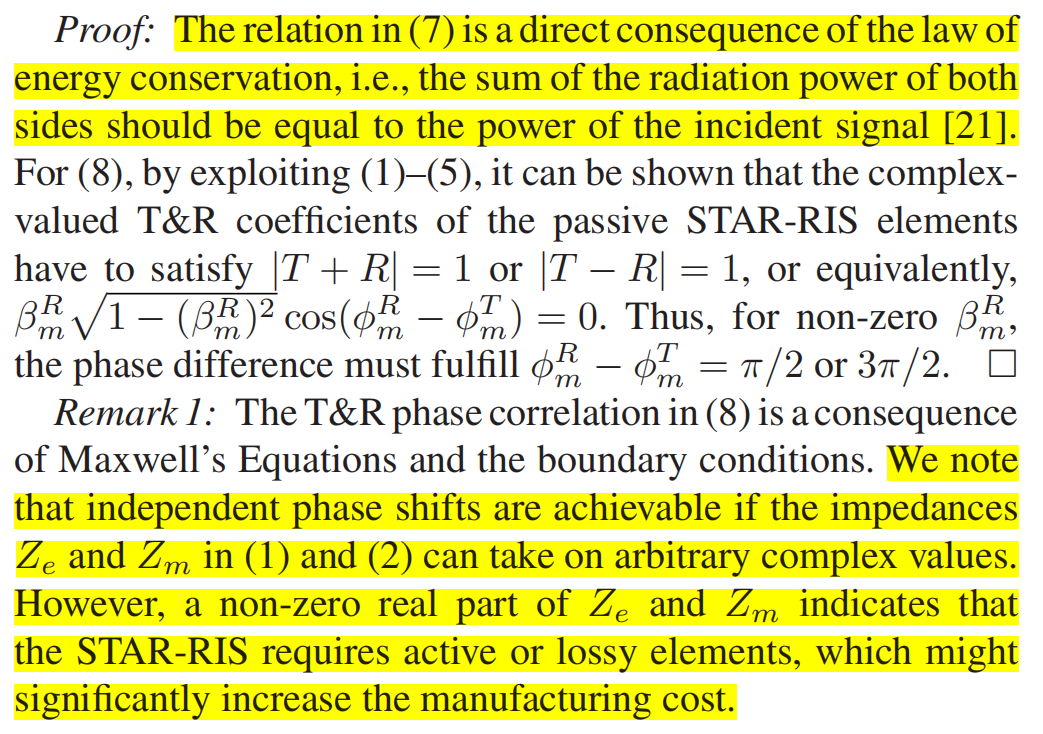
Independent adjustment
According to the Maxwell’s Equations, the phase shift of both transmitting and reflecting can be adjusted independently if the if the impedances and in (1) and (2) can take on arbitrary complex values, which means that the STAR-RIS required a active or lossy elements.
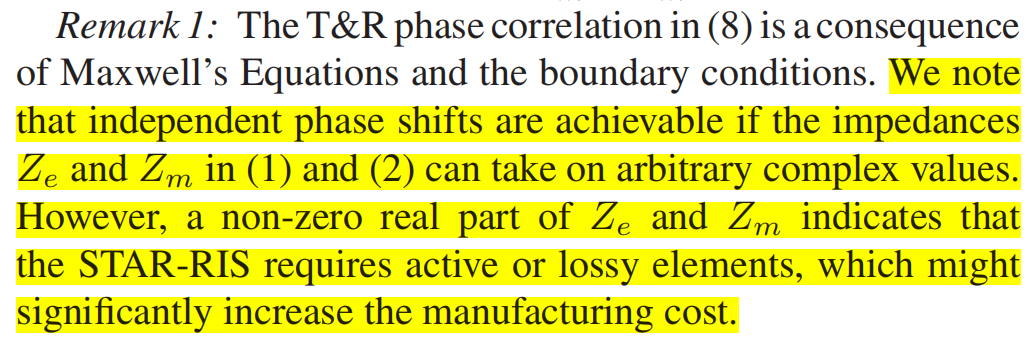
OMA v.s. NOMA
OMA
选择FDMA,且两个用户占用正交的、相同带宽的频带。则其可达速率为:
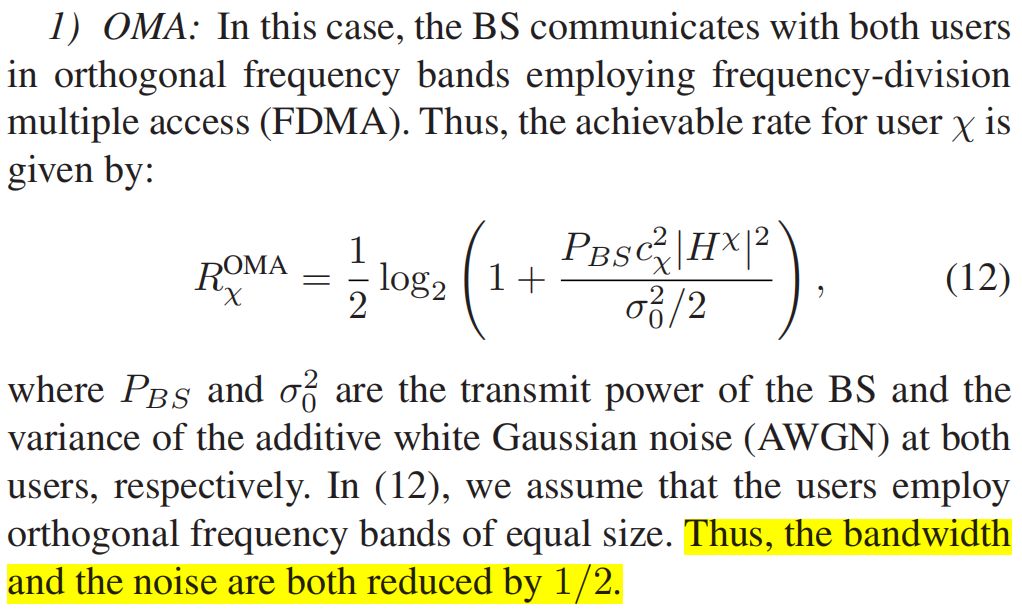
有意思的是,带宽变为1/2,因为两个用户各占一半,然后噪声功率也下降,因为用户带宽各占一半
NOMA
一个用户采用SIC(连续干扰消除)来消除干扰。为了成功实施SIC,给强信道弱功率,弱信道强功率
- 基于CSI的用户排序
- CSI强的用户先解码CSI弱的用户的信号
- 然后CSI强的通过SIC减去用户弱的,得到自己的信号
- 弱信道将强信道(弱功率)当做干扰
例如,R强,T弱,则有:
- 先R解T:

- 再R解R:

- 再T解T:

Three available optimization methods
Primary-Secondary Phase-Shift Configuration (PS-PSC) Strategy
step1: 先只考虑主要用户,而忽略其中的约束
step2: 再考虑次要用户,次要用户相移为主要用户的v调整(次要用户的相移为主要用户相移的 or )
Diversity Preserving Phase-Shift Configuration (DP-PSC) Stratege
先计算二者的最优:

然后通过查表进行:
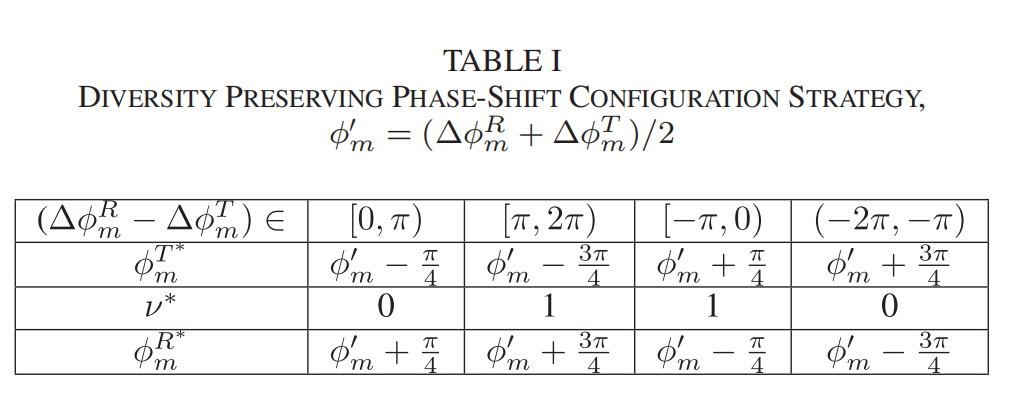
记误差:
有:
T/R-Group Phase-Shift Configuration (TR-PSC) Strategy
分组,分为透射和反射,分别用于不同用户
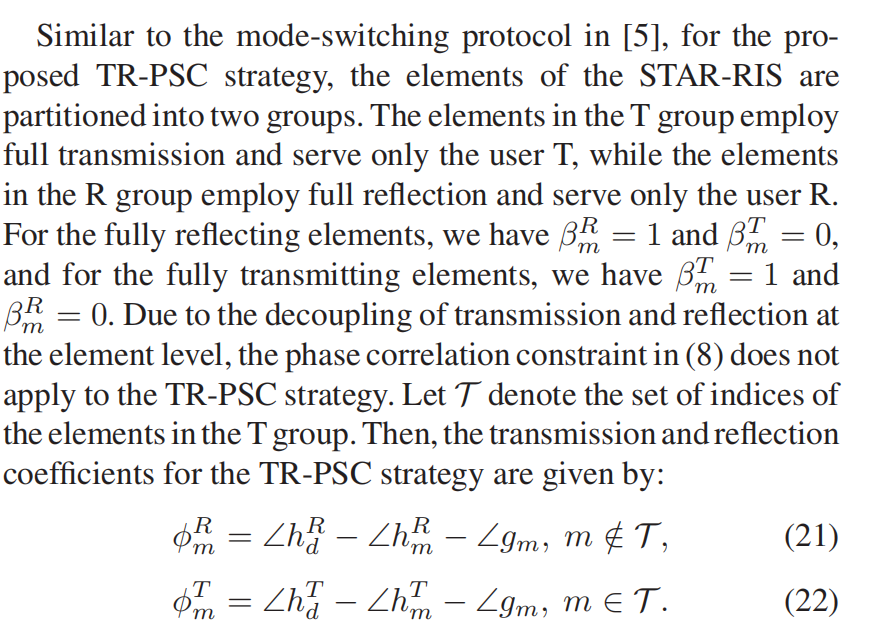
本文作者: Joffrey-Luo Cheng
本文链接: http://lcjoffrey.top/2024/03/18/JSAC-STAR-RIS/
版权声明: 本博客所有文章除特别声明外,均采用 CC BY-SA 4.0 协议 ,转载请注明出处!